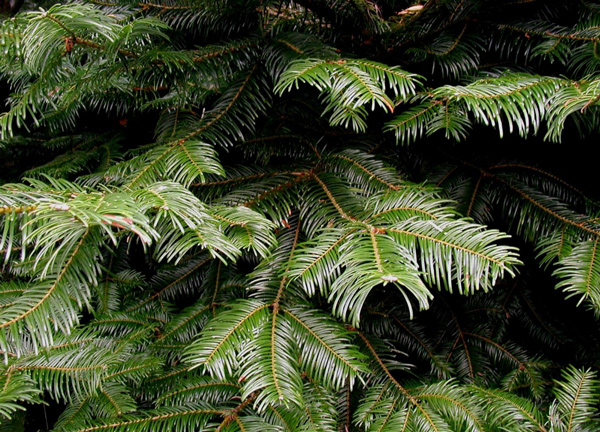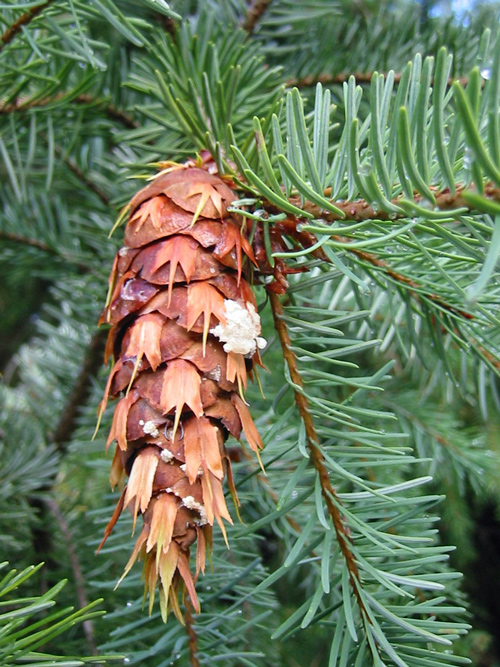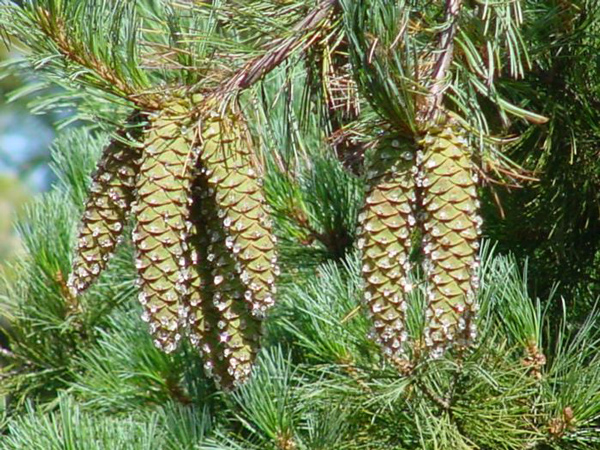Sgt. Pryor returns to Fort Clatsop and reports that some Clatsops have taken four elk killed by expedition hunters. Lewis finishes his treatise on local conifers including grand fir, Douglas-fir, and western white pine.
Hunting Again
by Yellowstone Public Radio[1]Originally aired weekdays by Yellowstone Public Radio during the Bicentennial observance of 2003-2006. Narrated by Hal Hansen. Scripts by Whit Hansen and Ed Jacobson. Produced by Leni Holliman. © … Continue reading
Stolen Elk
Late in the evening Sergt. Pryor returned with the flesh of about 2 Elk and 4 skins the Indians having purloined the ballance of seven Elk which Drewyer killed the other day.
—Meriwether Lewis
Grand Fir
No. 3 A species of fir which one of my men informs me is precisely the same with that called the balsam fir of Canada. it grows here to considerable size . . . . smal pustules filled with this balsam rise with a blister like appearance on the body of the tree and it’s branches
—Meriwether Lewis
Fir No. 4
(No. 4) is a species of fir which in point of size is much that of No. 2.
—Meriwether Lewis
Douglas-fir
No 5. is a species of fir which arrives to the size of Nos. 2 and 4, the stem simple branching, diffuse and proliferous . . . . it affords but little rosin and the wood is redish white 2/3ds of the diameter in the center, the ballance white, somewhat porus and tough.
—Meriwether Lewis
Western White Pine
No. 6 the white pine; or what is usually so called in Virginia. I see no difference between this and that of the mountains in Virginia; unless it be the uncommon length of cone of this found here, which are sometimes 16 or 18 inches in length and about 4 inches in circumpherence . . . . this species is not common I have only seen it but in one instance since I have been in this neighbourhood which was on the border of Haley’s bay on the N. side of the Columbia near the Ocean.
—Meriwether Lewis
Sleeping in the Snow
Ten of us started with a canoe to bring in the meat of the elk, killed yesterday; and had to encamp out all night, but, with the assistance of the elk skins and our blankets, we lodged pretty comfortable, though the snow as 4 or 5 inches deep.
—Patrick Gass
Weather Diary
aspect of the weather at rise
Wind at rise
aspect of the weather at 4 OC1 P.M. Wind at 4 O’Clock P.M. fair N. E cloudy S. W. very cold last night think it reather the coldest night that we have had. cloudy at 9 A M
—Meriwether Lewis[2]To assist the reader, the editor of this web page has omitted the “Day of ye Month” column and spelled out some abbreviations.
Experience the Lewis and Clark Trail
The Lewis and Clark Trail Experience—our sister site at lewisandclark.travel—connects the world to people and places on the Lewis and Clark Trail.
Plan a trip related to February 6, 1806:

Fort Clatsop is a High Potential Historic Site along the Lewis and Clark National Historic Trail managed by the U.S. National Park Service. The site is managed by the Lewis and Clark National and State Historic Parks.
Notes
| ↑1 | Originally aired weekdays by Yellowstone Public Radio during the Bicentennial observance of 2003-2006. Narrated by Hal Hansen. Scripts by Whit Hansen and Ed Jacobson. Produced by Leni Holliman. © 2003 by Yellowstone Public Radio. |
|---|---|
| ↑2 | To assist the reader, the editor of this web page has omitted the “Day of ye Month” column and spelled out some abbreviations. |





